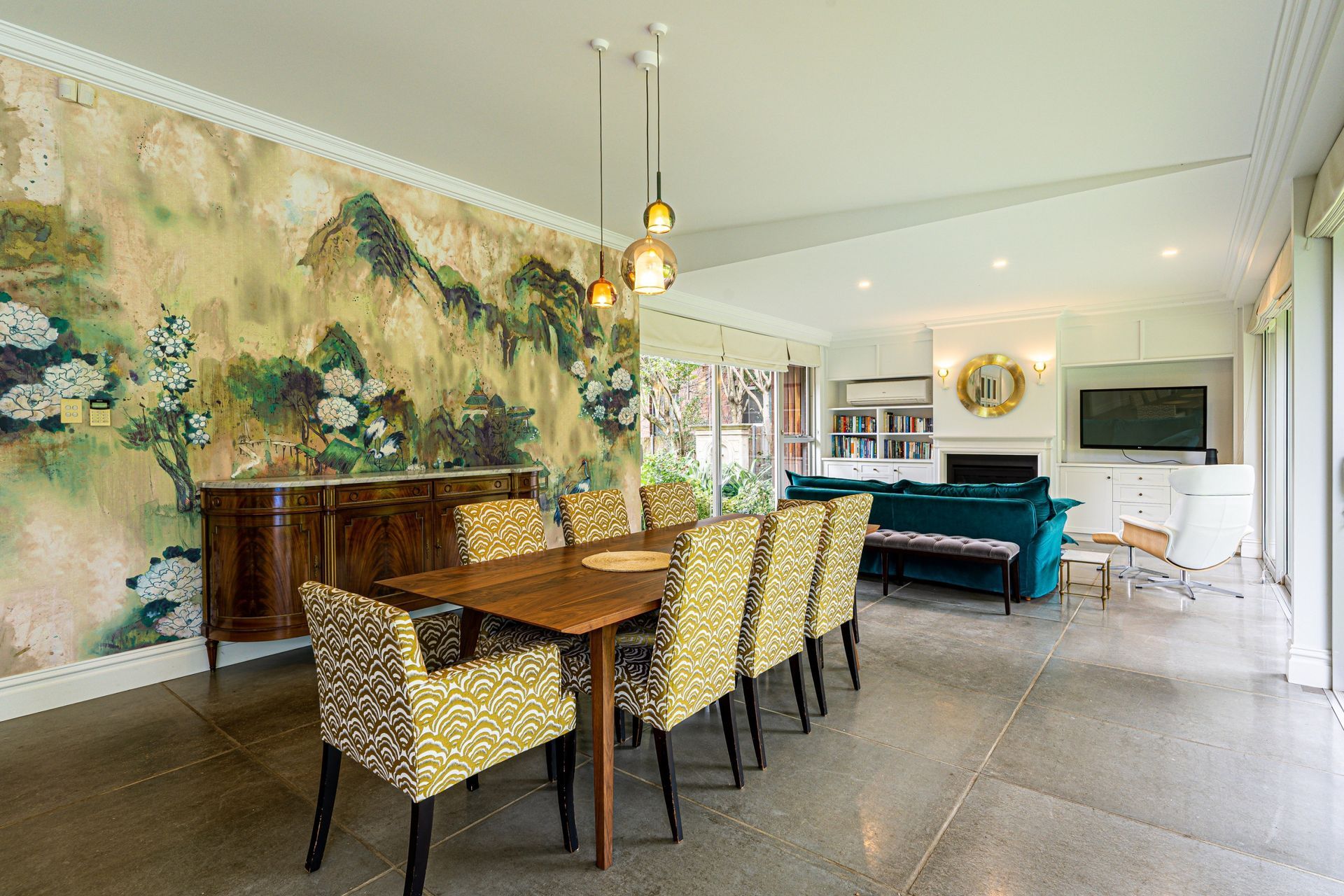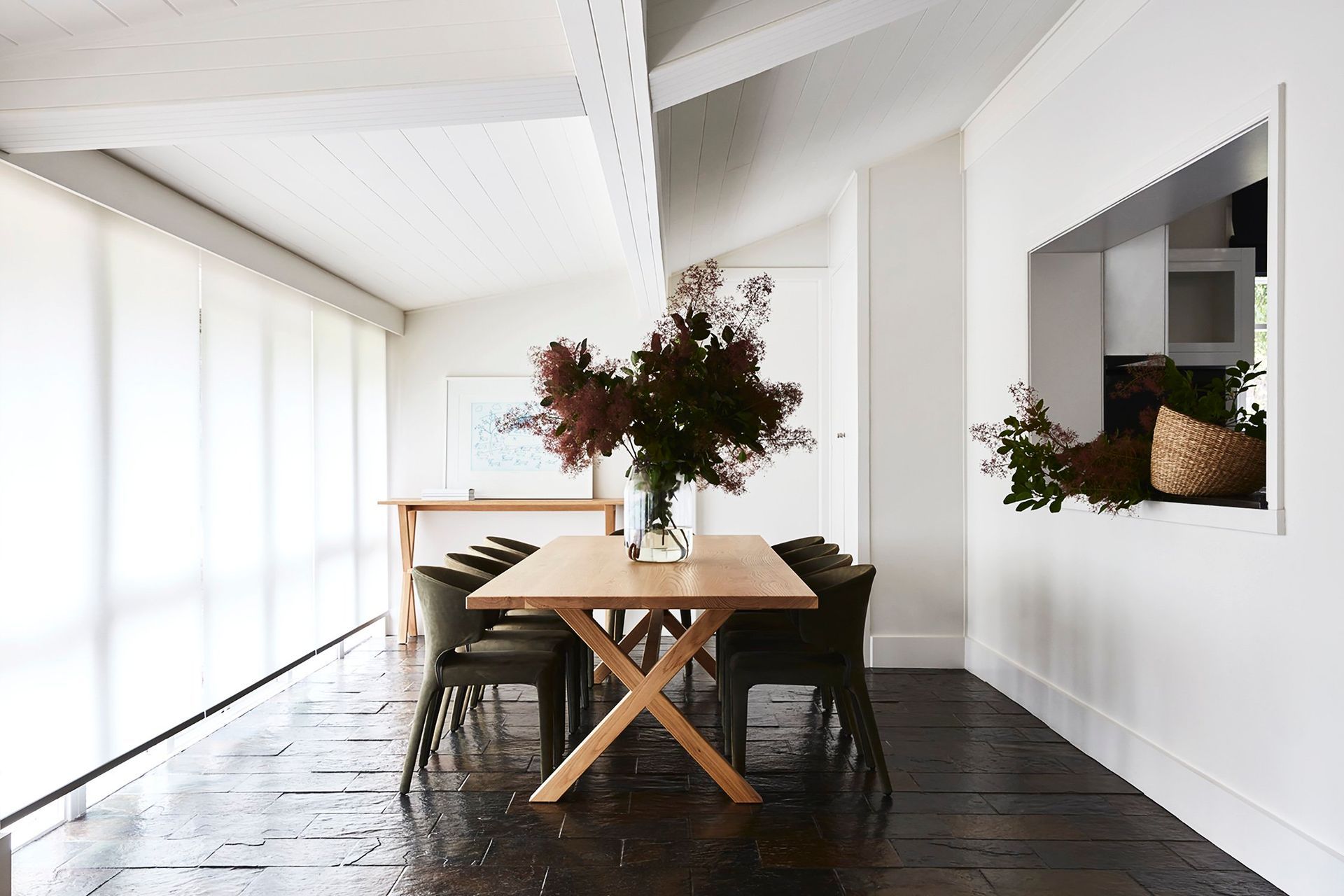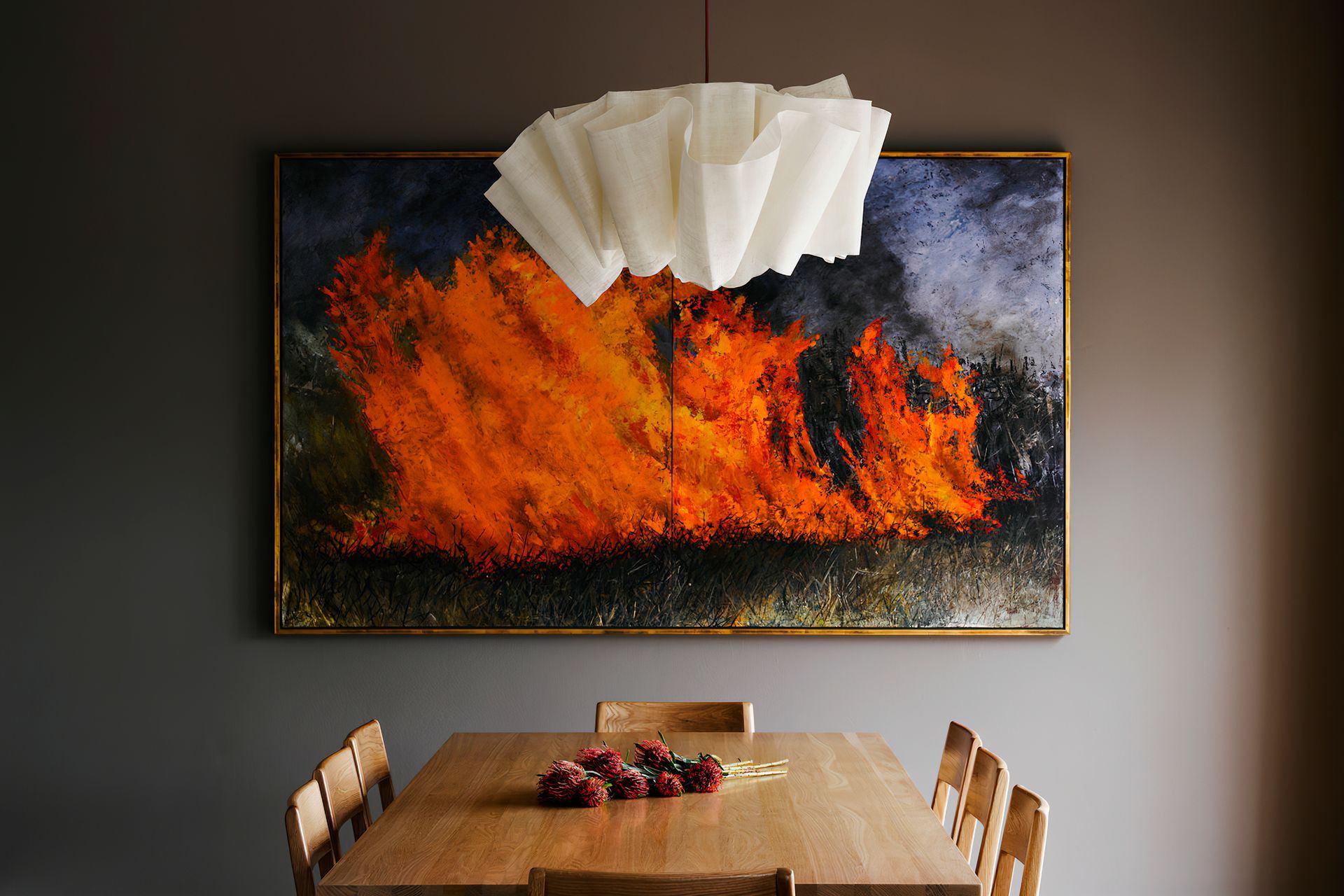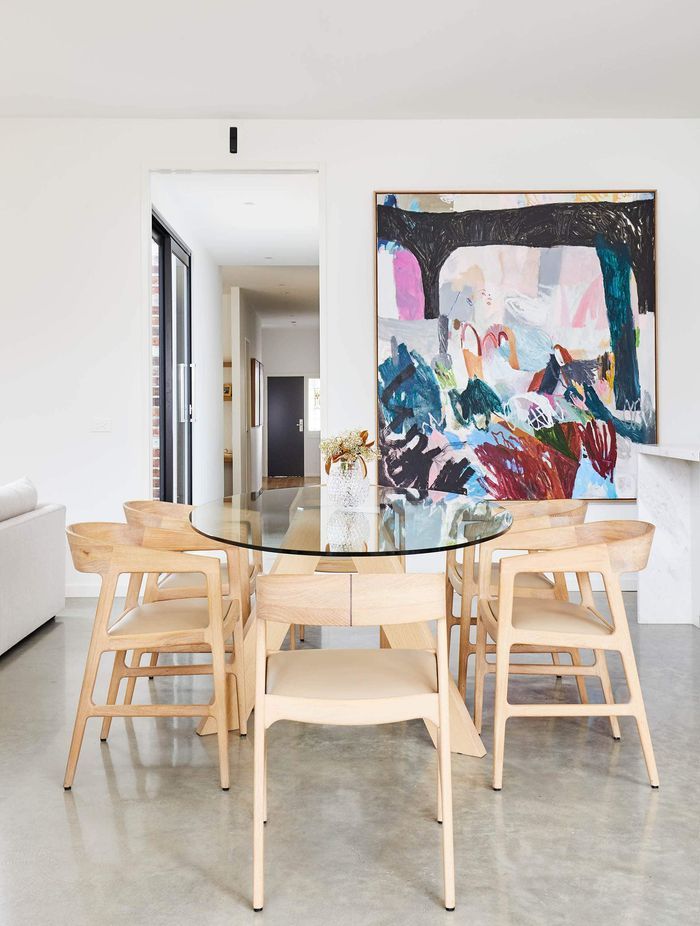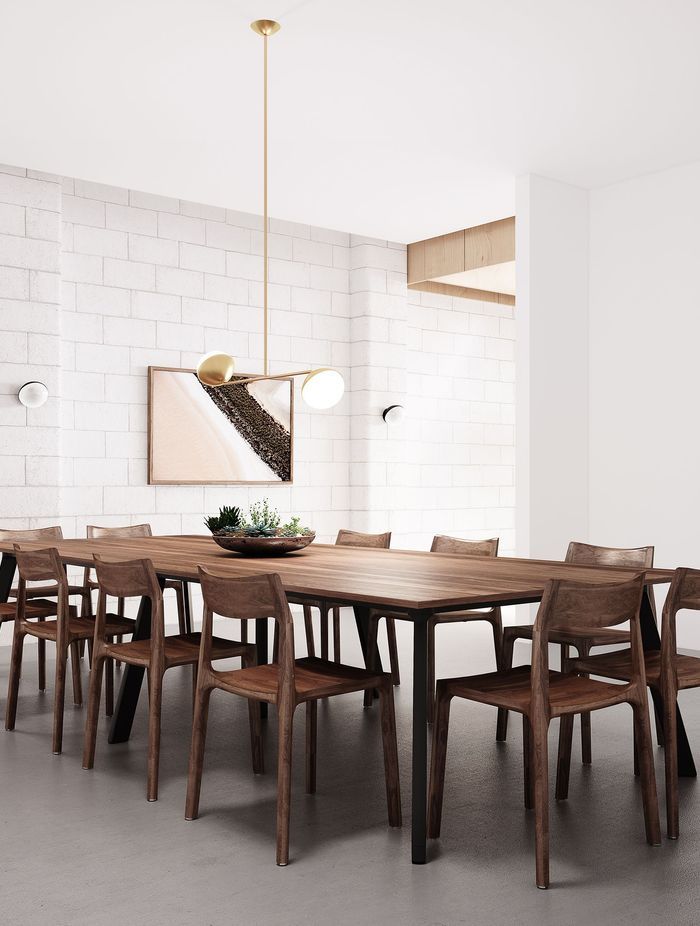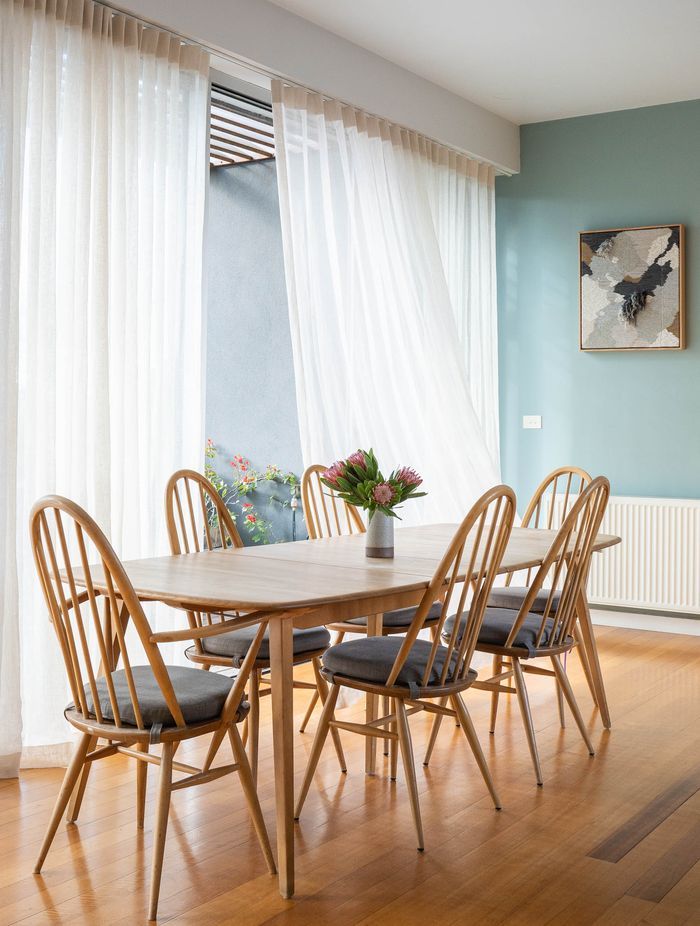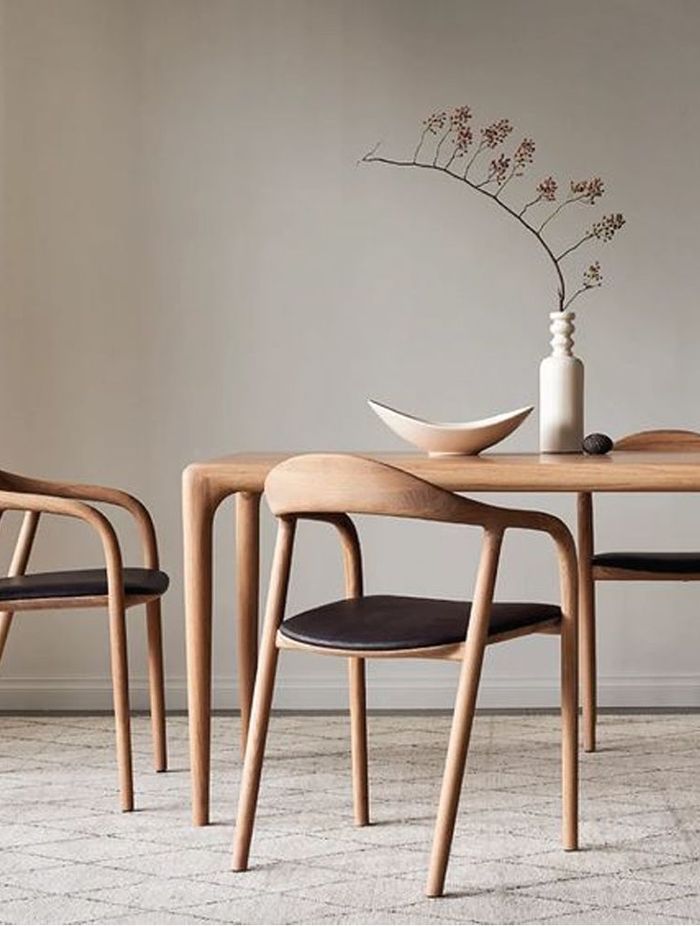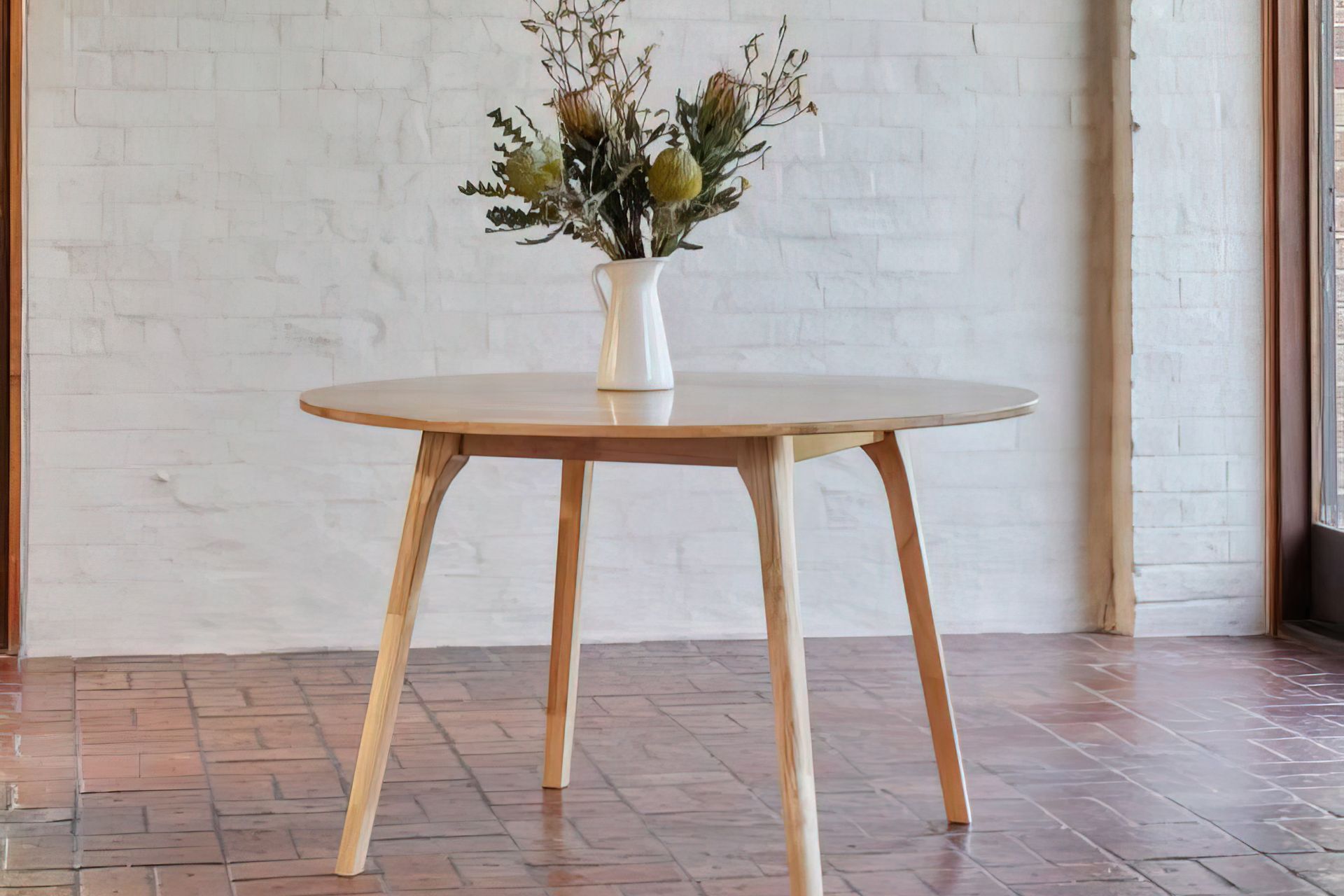Decoding dining room dimensions: A practical guide for homeowners
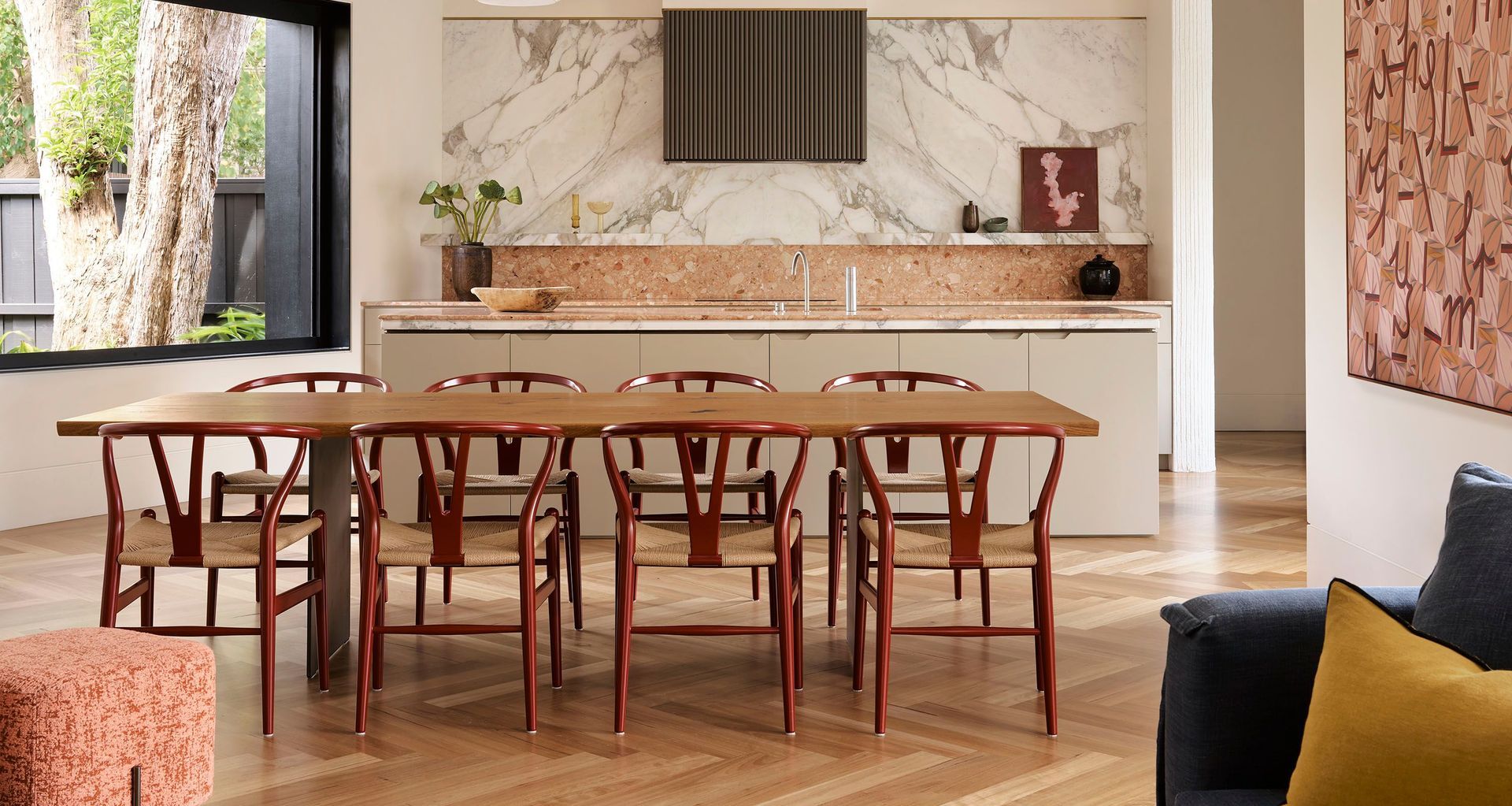
Knowing the right dining room sizes is important whether you’re building a new home, renovating, or just hoping to make the most of your existing space. This knowledge helps you ensure enough room for comfortable dining and movement, making it easier to enjoy meals and create lasting memories with family and friends.
What is a good size dining room?
The concept of a "good" or "ideal" dining room can be quite subjective, and suitability largely depends on the number of people intending to use the room and individual requirements and preferences. However, a dining room measuring around 3.6 x 3.6 metres is generally considered suitable in many cases. It allows for the comfortable accommodation of a medium-sized table for 6 to 8 people.
What are the standard dining room sizes?
Small Dining Room:
Size: Approximately 3 m x 3 m.
Typically suits a small household or a space-constrained setting, accommodating a table for 4 to 6 people. This is ideal for more intimate dining experiences, perhaps for couples or smaller families, where space is at a premium.
Medium Dining Room:
Size: Around 3.6 m x 3.6 m.
This size is more versatile and is usually adequate for most households. It can comfortably accommodate a table for 6 to 8 people and offers more flexibility in furniture arrangement, providing ample space for movement and additional furniture like a buffet.
Large Dining Room:
Size: Generally 4.5 m x 4.5 m or more.
A large dining room is well-suited for those who entertain regularly or have larger families. It can host a table for 8 to 12 people or more while allowing for enough space to accommodate additional furniture or additional seating if required.
What are the dimensions of an open plan dining room?
Creating an open-plan dining room involves careful planning to optimise space usage, and there are no definitive dimensions as it greatly depends on the overall available space and individual needs. However, there are guidelines to assist in planning the area effectively.
Firstly, when considering the dining table and chairs, a space of approximately 2.5 to 3 metres in length and width is advised to properly accommodate standard dining furniture, allowing for 90-100 cm for the table and an additional 60-80 cm on each side for chairs and movement.
Secondly, it’s crucial to maintain adequate space around the table. A minimum of 90 cm is necessary, but 120 cm is ideal to allow comfortable movement around the dining area.
It's worth keeping in mind that the overall size of the open plan space can impact the allocated dining area dimensions, as it may need to be adjusted based on other incorporated areas, such as the living and kitchen spaces and what they are used for.
How to determine your ideal dining room size
If you're designing or planning a dining room space, there are a few steps you should take to ensure you design a space that's a suitable size. These are:
1. Think about many people use your dining space
The first step is to think about how many people will be using your dining room on a regular basis. For example, if you regularly have 6-8 people dining, then a good ballpark size to aim for is 3.6 x 3.6 metres.
2. Consider furniture dimensions and clearance
The next step is to think about your existing dining room furniture or the furniture you plan on purchasing. The main consideration will be your dining table. The average dining table typically has a width of between 90 - 105 cm, a height between 70 - 80 cm, and a length ranging from 180 - 205 cm; a table of this size should be able to fit at least six diners around it. As mentioned, a clearance of at least 90cm between the table and surrounding objects is essential to avoid any feeling of crampedness and to allow for easy movement around the room.
3. Evaluate the overall room layout
Review the entire space, and pay special attention to the placement of doors, windows, and built-ins to ensure that your dining arrangement does not obstruct or interfere with other functional elements within the room. Proper layout planning is crucial for determining the ideal room size and creating a harmonious flow within the space.
4. Align dining table shape with room shape
Evaluate the shape of your dining room. A square or round table may fit better in a square room, while an oval or rectangular table will likely suit a rectangular room best. Selecting a table shape that harmonises with the room’s dimensions will contribute to a balanced and stylish pleasing dining area.
5. Adjust to your lifestyle
Consider the flexibility and adaptability of your dining area to accommodate varying numbers of guests, whether through extendable tables or additional seating options. A versatile dining space can meet different needs and preferences, ensuring a pleasant dining experience for everyone.
General tips for arranging a dining room
When you're arranging a dining room, it's important to consider the size and balance of the furniture in relation to the room. Select a dining table that fits well within the room, allowing enough space to move chairs and walk around comfortably. If there’s enough room, a round or oval table can be a good choice as they are more conducive to conversation and can accommodate more people.
Lighting is also crucial. Place a well-chosen light above the dining table to draw focus, and make sure the lighting can be adjusted to suit both everyday meals and special occasions. Adding additional light sources, like wall lights or floor lamps, can help create a layered lighting effect and give more control over the room’s mood.
Adding a sideboard or buffet can offer useful storage and serving space. Place it near the dining table, but ensure it doesn’t block the flow of movement within the room. This piece of furniture can also be used to display decorative items, artworks, or a selection of dishes and glassware.
Finally, pay attention to the colour scheme and decorative elements in the room. Choose colours that blend well with the rest of your home, and use textures and patterns in curtains and table linens to add visual interest to the space. Items like wall art, mirrors, or plants can also help to make the dining room more welcoming, while reflecting your lifestyle.
How should you arrange a small dining room?
If you have a small dining area, such as those often found in apartments it can be beneficial to pay particular attention to the spatial layout and how the furniture fits. It might be worth considering a round or oval table, as this could be a more space-efficient choice than a square or rectangular table. Chairs without arms might be a good option as they generally take up less room and can be tucked under the table when not in use.
Additionally, the visual aspect and flow of the room are also important considerations. Keeping pathways and sightlines clear can contribute to a feeling of openness and can make the room appear more inviting. Using lighter colour palettes and effective lighting can create a perception of a more spacious environment.
What essentials do you need in a dining room?
There are various items you should consider when you're furnishing your dining room, here are some essentials:
Furniture:
Dining Table - the central piece of any dining room, dining tables are available in various sizes, shapes, and materials.
Dining Chairs - comfortable seating is essential; dining chairs should complement the table in style and size.
Sideboard or Buffet - useful for storing dinnerware, table linens, and serving dishes. Also, acts as an extra serving surface.
Display Cabinet - a place to display fine china, glassware, or collectibles.
Bar Cart - convenient for storing and serving drinks, especially if the dining room is used for entertaining.
Lighting:
Chandelier or Pendant Light - serves as an attractive focal point as a focal point.
Wall Sconces or Table Lamps - these add layers of light, setting the mood and enhancing room balance.
Textiles:
Rug - a well-sized rug can define the dining area and add warmth and texture.
Curtains - window treatments like curtains can provide privacy, control natural light, and enhance the overall aesthetic.
Tablecloth - a tablecloth protects the table and adds a decorative touch.
Seat Cushions - add comfort to your dining chairs for a more enjoyable mealtime.
Tableware & Accessories:
Dinnerware - includes plates, bowls, and serving dishes.
Glassware - a selection of glasses for different beverages.
Cutlery - essential eating utensils like forks, knives, and spoons.
Napkins & Napkin Rings - useful for maintaining cleanliness and adding a decorative touch.
Serving Utensils - necessary for serving food, such as serving spoons and forks.
Centrepiece - a decorative piece like a vase with flowers or a bowl of fruit can add visual interest to the table.
Candles or Candle Holders - can create a cosy and intimate atmosphere.
Additional Items:
Mirror - can make the room appear larger and brighter by reflecting light.
Artwork or Wall Decor - adds personality and interest to the room.
Clock - A practical piece that can also serve as an artistic or vintage focal point.
Organisational Items:
Shelving - useful for displaying decorative items or storing dining essentials.
Storage Baskets or Boxes - can help in organising table linens, candles, and other small items.
Final thoughts
Hopefully, this article has given you an idea of the common sizes of dining rooms found in different homes and some creative ideas that you can apply when you're styling your dining room and deciding its experiment with its layout. After all, a dining room holds pivotal importance in a home as a hub of communal activity, serving as a place where people gather to share meals, engage in conversations, and enjoy special occasions. Getting the sizing right will help you and your family enjoy a space where you can create lasting memories for years to come.
Related article: Delightful dining room decorating ideas for Australian homes

